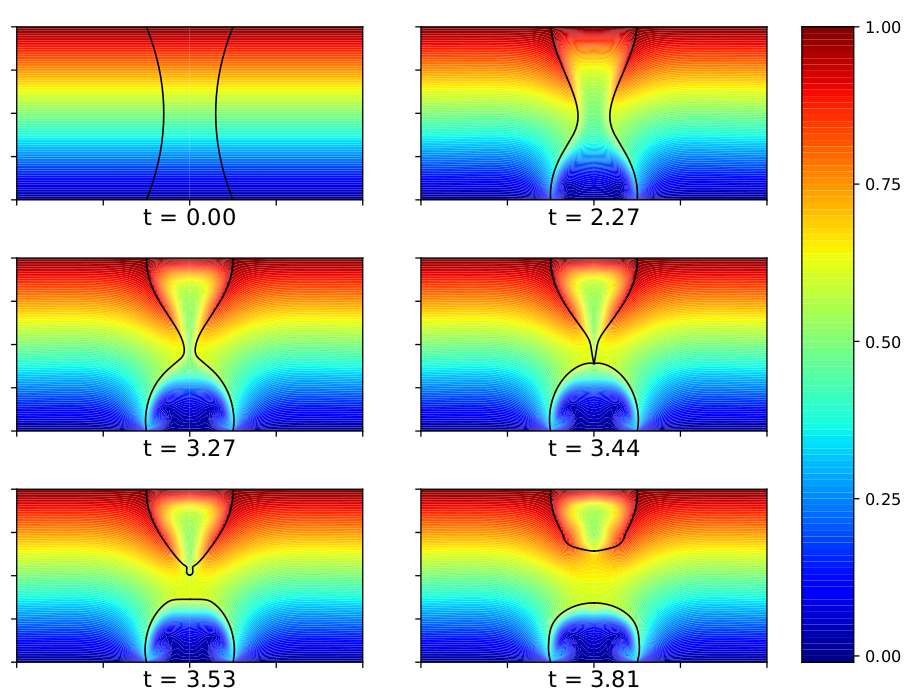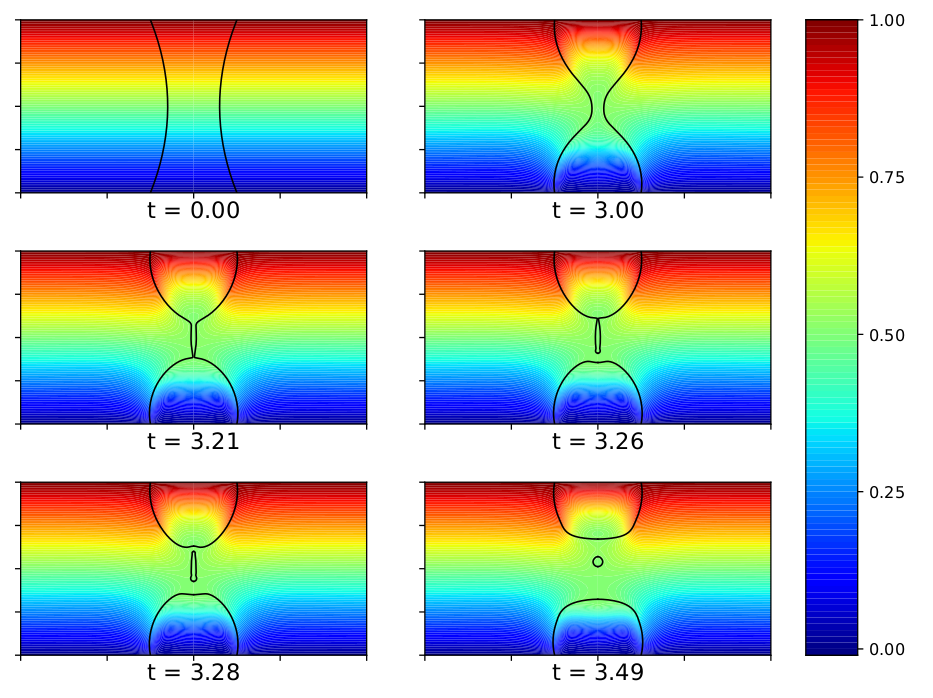Non-isothermal liquid bridge breakup
Simulation of non-isothermal liquid bridge
In general, interfacial tension decreases as the temperature increases. As a result, non-uniform temperature can result in fluid motion along the interface, and eventually flow in the bulk fluid. This is called thermocapillarity. To study thermocapillary flows, we incorporated non-isothermal effects into our Navier-Stokes solver and implemented a heat transfer solver.
This video shows the experimental study of a liquid bridge breakup driven by thermocapillarity. This was conducted by Ueno et al. (2012) in the International Space Station.
We used our method to investigate the thermocapillary driven break-up of a liquid bridge. A group of scientists have studied this problem experimentally in the International Space Station, but numerical simulation enables us to thoroughly investigate the role played by thermocapillary force.
In an isothermal scenario, a long liquid thread forms in the middle of the liquid bridge and ends up as a satellite droplet after pinch-off. The break-up shape is symmetrical with respect to the centre of the liquid bridge. With the presence of thermocapillarity, the flow along the interface is towards the warm end, which undoubtedly breaks the up-and-down symmetry. Based on dimensional analysis, three dimensionless numbers are required to define this problem: Oh, Ca and Pr. We studied the effect of Ca number, which represents the relative importance of thermocapillarity. Below shows two distinct break-up shape with a large and small Ca number.
In an isothermal scenario, a long liquid thread forms in the middle of the liquid bridge and ends up as a satellite droplet after pinch-off. The break-up shape is symmetrical with respect to the centre of the liquid bridge. With the presence of thermocapillarity, the flow along the interface is towards the warm end, which undoubtedly breaks the up-and-down symmetry. Based on dimensional analysis, three dimensionless numbers are required to define this problem: Oh, Ca and Pr. We studied the effect of Ca number, which represents the relative importance of thermocapillarity. Below shows two distinct break-up shape with a large and small Ca number.

